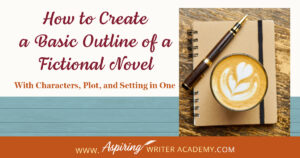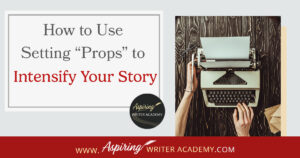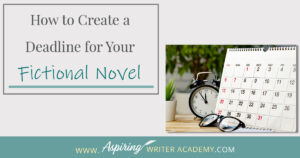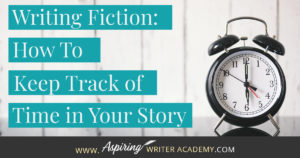The Timelines and Settings page is filled with blog posts to help you craft well-developed timelines and immersive settings that enrich your story. From historical novels to contemporary fiction and fantasy, understanding how to effectively structure your timeline and create vivid settings is key to building a world that captivates readers.
How to Create a Basic Outline of a Fictional Novel with Characters, Plot, and Setting in One
Looking for a faster, easier way to brainstorm a new story idea? Wondering where to begin—characters, plot, or setting? You can start with any of these elements, but it’s essential to consider how they interconnect, as adjustments may be necessary to craft a cohesive story that works.
How to Outline a Fictional Novel with Characters, Plot, and Setting in One Day offers a set of insightful questions designed to help you create a basic outline for your new fictional story—all in a single session.
How to Use Setting “Props” to Intensify Your Story
What exactly is a “prop” in a fictional story? How can you use props to spice up a particular scene or increase the conflict on the pages of your novel?
In our post, How to Use Setting “Props” to Intensify Your Story, we discuss 3 ways you can use items in the setting to write vivid description, reveal character, and elevate the conflict.
10 Tips for Using Flashbacks in Your Fictional Novel
A flashback in a fictional novel is a scene that happened in the past to show characterization, motivation, or explain a facet of the present story. But how do you transition in and out of a flashback scene? How many are too many? Are there rules to writing flashbacks?
In 10 Tips for Using Flashbacks in Your Fictional Novel, we discuss how to write clear, concise, plot-driven flashback scenes that will strengthen the story and hook your reader.
How to Create a Deadline for Your Fictional Novel
The difference between a goal and a dream is that a goal has a deadline, a targeted finish date. Is it your goal to write and finish a book? Do you have an action plan? Or does the whole process feel overwhelming? Even if you do not have a book contract you should aim for a date of completion to help keep you on track.
In our post, How to Create a Deadline for Your Fictional Novel, we show you how to calculate your finish date and set up milestones to mark your progress toward a finished book.
Fiction Writing: What is a Character’s ‘Ordinary World?’
Does your character live in a world where animals talk? Does he fly a spaceship to work? Or does his ‘ordinary world’ include monsters or a unique culture with specific rules and questionable beliefs?
In our post, Fiction Writing: What is a Character’s ‘Ordinary World?’ we show you how to give the reader the set-up pieces needed to understand your character and how he fits in with his environment before the external events of the plot unfold.
How to Create S.M.A.R.T. Goals to Keep Your Writing on Track
Do you set goals with your writing only to have them derailed? Do you have trouble finishing a novel or with time management in general? How is an author supposed to maintain a personal life, do household chores, and write—publish—promote their stories without feeling overwhelmed or run ragged? In our post, How to Create S.M.A.R.T. Goals to Keep Your Writing on Track, we show you how to eliminate frustration and hit the needed milestones to write and finish your fictional story.
How to Use Setting to Intensify Your Fictional Scenes
While it is important to focus on the characters and plot of your fictional story, how much attention do you give to the setting? Do you use the weather to depict mood a little too often? Are your scene details randomly inserted without any real purpose or meaning?
In How to Use Setting to Intensify Your Fictional Scenes, we help you create unique settings that work on multiple levels to enhance the scene, reveal your character’s personality, and build intensity into each story conflict.
The Pros and Cons of Writing Holiday Fiction (Collections & Anthologies)
During the holiday season you have probably seen advertisements for a multitude of ‘Holiday Book Collections.’ Readers love these collections, not just to put them into the holiday spirit, but because they can usually get several stories for a reduced rate. Authors also love these collections because the group promotions can help launch their book onto bestseller lists.
The Pros and Cons of Writing Holiday Fiction (Collections & Anthologies) helps you decide if joining in on a collection is the right choice for you!
How to Research Information for a Historical Novel
If you are interested in writing historical fiction, you may be wondering—how do you research a historical era? Where do you go to learn about the customs, currency, weapons, mode of transportation, style of dress? What kind of names, food dishes, or jobs were popular back then? Are there websites with this information?
In our post, How to Research Information for a Historical Novel, we give you several valuable resources to find the information you need to write a realistic, historical tale!
Fiction Writing: Create a Storyboard to Map Out Your Scenes
What is the first step to writing a scene?
While some writers just wait to see what comes to mind, it is helpful for most writers to have a plan. Figuring out the scene details and objectives on a “Storyboard” beforehand allows you to write your scenes with ease.
If you are unsure how to craft a vibrant, compelling, purpose-filled scene, follow along as we help you with the framework in our post, Fiction Writing: Create a Storyboard to Map Out Your Scenes, with our Free Template.
Fiction Writing: How Specific Details Can Bring Your Setting to Life
The setting for your fictional story can be so much more than just the general description of a place. The right details can depict mood, personality, theme, character change, and touch the reader’s emotions in profound ways.
In our post, Fiction Writing: How Specific Details Can Bring Your Setting to Life, we discuss several techniques to help you craft meaningful scenes that will deepen your fiction and entice readers to rave about your story world as if it were a real place.
How to Research a Setting for Your Fictional Novel
Settings. Where does your story take place? Is it a real place?
Even if you choose to ‘make up’ a setting, you may still want to base some of the details off a real place to make it feel real. Researching a setting may also inspire character or plot details.
In our post, How to Research a Setting for Your Fictional Novel, you can come along on a photo-journal research trip and learn a few tricks to create realistic settings for your own story.
Writing Fiction: How To Keep Track of Time in Your Story
Have you ever read a story where the timeline didn’t make sense?
When writing a fictional story, using a ‘story calendar’ will help you keep track of time between each of your scenes to avoid confusion and keep your story believable and accurate.













